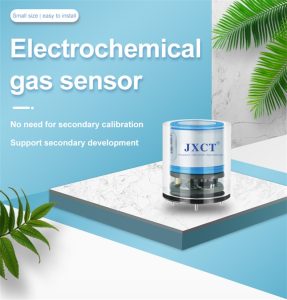Gas detection is of paramount importance in various industries to ensure the safety and well-being of workers, prevention of accidents, and protection of the environment. Traditional methods of gas detection often had limitations in terms of accuracy, response time, and reliability. However, with the advent of advanced gas sensors, safety measures have been revolutionized. In this article, we will explore how gas sensors are transforming safety measures through their enhanced capabilities, applications in different industries, and their positive impact on occupational safety.
Enhanced Capabilities of Gas Sensors:
Gas sensors have evolved significantly, offering enhanced capabilities that have revolutionized gas detection systems. Here are some key advancements:
Greater Sensitivity:
Modern gas sensors are highly sensitive, capable of detecting even minute concentrations of gases and volatile organic compounds (VOCs). This ensures early detection of potential hazards, allowing for timely preventive measures to be taken.
Speed and Accuracy:
Gas sensors now provide rapid and accurate results, allowing for quick identification and measurement of gases in real-time. This enables faster response times, minimizing the risk of exposure to hazardous substances.
Selectivity:
Advanced gas sensors have improved selectivity, meaning they can distinguish between different types of gases. This is particularly valuable in situations where different gases may be present simultaneously, as it allows for precise identification and monitoring of specific hazardous substances.
Applications in Different Industries:
Gas sensors find applications in a wide range of industries, each with unique safety requirements. Let's explore some of these industries and how gas sensors are revolutionizing safety measures:
Oil and Gas Industry:
The oil and gas industry poses numerous gas-related hazards, such as the presence of flammable gases, toxic hydrogen sulfide (H2S), and explosive hydrocarbons. Gas sensors play a crucial role in continuously monitoring these environments, alarming workers and initiating safety measures if gas concentrations exceed safe limits. This ensures prompt evacuation, preventing potential explosions or toxic exposures.
Chemical Manufacturing:
Chemical manufacturing processes involve the handling and storage of numerous hazardous substances. Gas sensors are employed to detect leaks, ensuring the immediate shutdown of equipment and preventing the release of dangerous gases into the atmosphere. This protects not only workers but also neighboring communities and the environment.
Mining Industry:
Underground mines are prone to the accumulation of toxic gases, such as methane (CH4), carbon monoxide (CO), and radon (Rn). Gas sensors are integrated into mine ventilation systems, providing continuous monitoring and sounding alarms when gas levels reach critical thresholds. This allows miners to evacuate safely and mitigates the risk of explosions or asphyxiation.
Manufacturing and Industrial Facilities:
Gas sensors are widely used in manufacturing and industrial environments to detect potentially harmful gases emitted from various processes, equipment, or chemicals. By continuously monitoring gas concentrations, swift actions can be taken to mitigate risks, such as adjusting process parameters, enhancing ventilation, or implementing safety protocols.
Positive Impact on Occupational Safety:
The integration of advanced gas sensors into safety measures has had a profound impact on occupational safety. Here's how gas sensors have improved workplace safety:
Prevention of Accidents:
Gas sensors provide an early warning system that helps prevent accidents by promptly detecting and alerting workers to the presence of hazardous gases. This allows for timely evacuations, shutdowns, and interventions, minimizing the likelihood of fires, explosions, or toxic exposures.
Health Protection:
Gas sensors contribute to the protection of workers' health by detecting harmful gases and VOCs. By continuously monitoring air quality, potential health risks can be identified and mitigated, preventing long-term health issues associated with exposure to hazardous substances.
Environmental Protection:
Gas sensors not only safeguard workers but also protect the environment. By detecting leaks, gas sensors help prevent the release of harmful substances into the atmosphere, soil, or water bodies. This contributes to maintaining ecological balance and minimizing the impact of industrial activities on the environment.
Challenges and Future Developments:
While gas sensors have revolutionized safety measures, certain challenges and areas for improvement remain:
Calibration and Maintenance:
Regular calibration and maintenance are crucial for ensuring the accuracy and reliability of gas sensors. Proper training is necessary to calibrate sensors correctly and address any sensor drift over time.
 : +86 155 8830 2704
: +86 155 8830 2704 : jxdziot@gmail.com
: jxdziot@gmail.com
